The film itself is very much a product of 70's style. With hallucinations, protests, a lot of electric bass in its soundtrack, an open-air acid rock concert, this film very accurately reflects the chaotic early seventies. In addition to making it feel dated, I have to say that I really hate the 70's post-hippie culture. The styles were ugly and clashed; plaid and patterns do not make a good ensemble. The club scenes may be accurate, but they're also hideous.
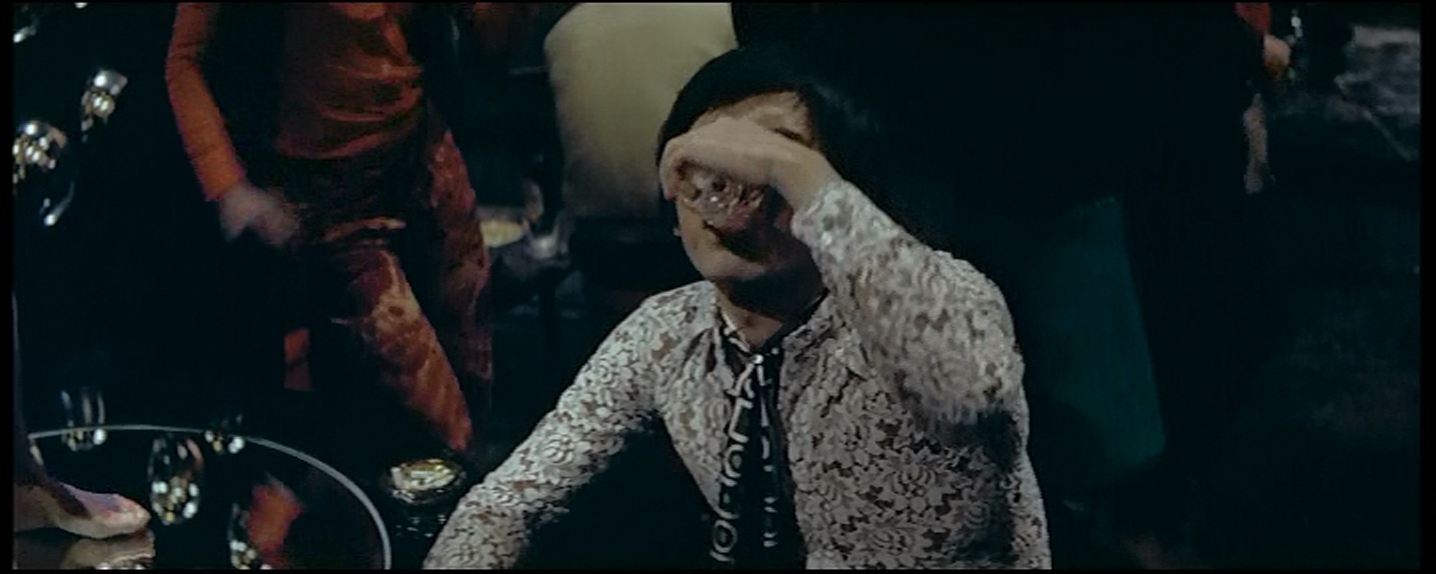
The seventies were also a time of increased environmental consciousness. Banno had read Silent Spring before writing Godzilla vs Hedorah, and decided that a monster made of pollution would make an excellent social statement. This effectively merges the social messages from two previous films; the caution against nuclear pollution from the original Godzilla, as well as the caution against commercial greed from Mothra vs Godzilla. Viewed from that perspective, this fits in well with some of Godzilla's classics.
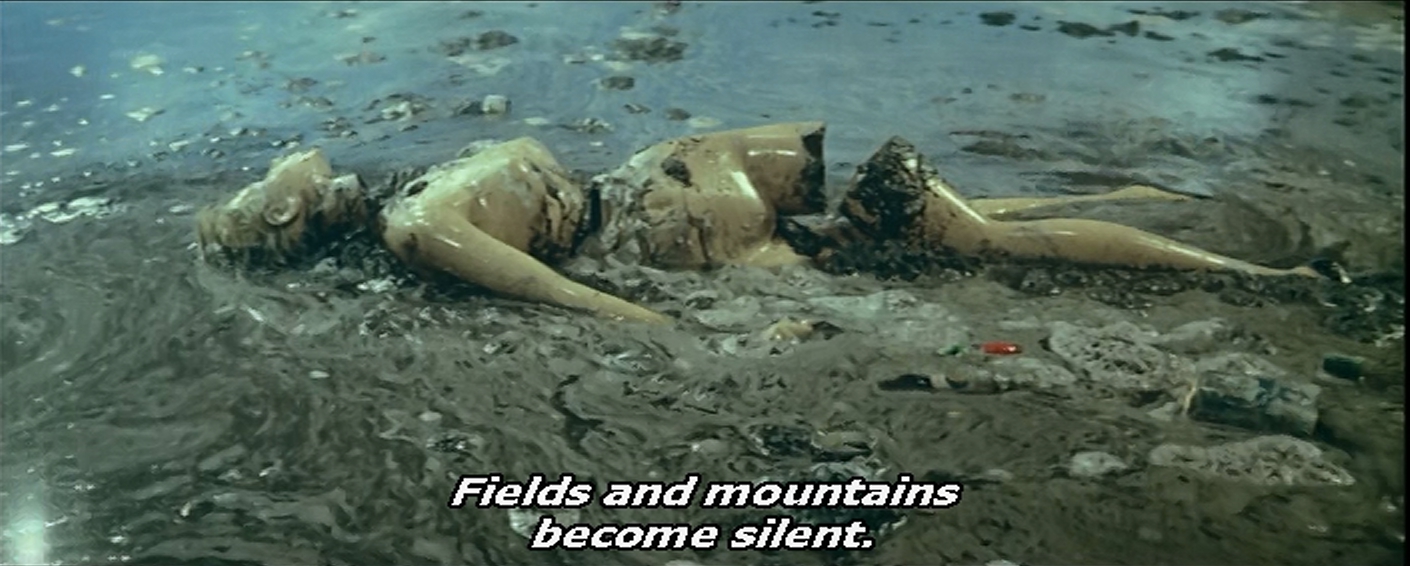
After the song that introduces the film, we have a sequence in which a young boy, Ken, plays with his Godzilla figure. Therefore, this world is on in which Godzilla has some sort of fanbase. But we learn that Ken likes Superman, also. Other toys include a Ghidorah, Ultraman, and possibly a Guilala. There's a bit of a shock when we discover that the cheery birdsong we've been hearing is from a plastic bird.
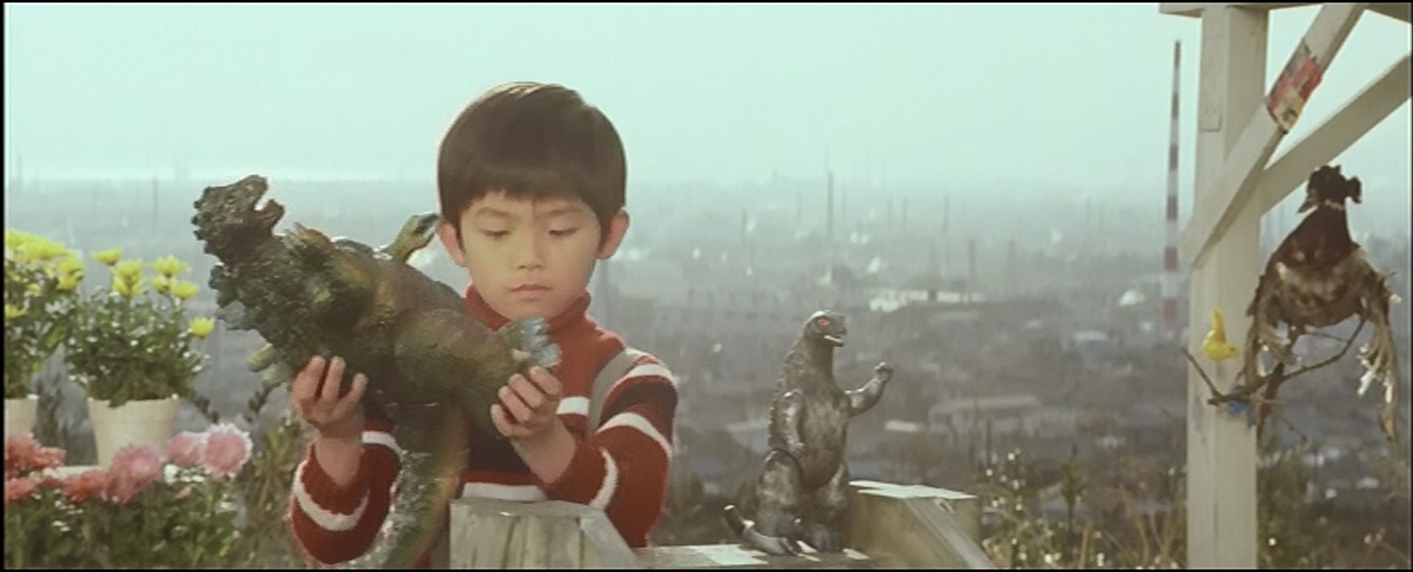
Ken seems to have a connection to Godzilla, although it's quite questionable whether this is true or really in the kid's head. So he doesn't so much resemble the majority of the annoying kids from the Gamera franchise, but more the Toshio from the original Gamera. And he's just not as annoying, partially because the film doesn't focus a lot on him, but also because the film is so grim.
Ken's father Toru is a scientist, some sort of ocean biologist, who keeps a tank of fish. Those of us who remember what happened to the fish in the original Godzilla look on this tank as a sort of Chekov's gun. When will those fish be reduced to skeletons? Banno uses those fish as a metaphor several times. Japan, after all, is an island, and fishing is incredibly important to the diet of the Japanese. When there are no more fish because the ocean is toxic, what are they going to eat? Further, as the young kids dance around in their disco, we get a hallucination that they all have fish heads. And the fish are dying. This may be heavy-handed 'we're all connected' metaphor, it's at least understandable. Drectly after the hallucination ends, Hedorah's slime enters the club.
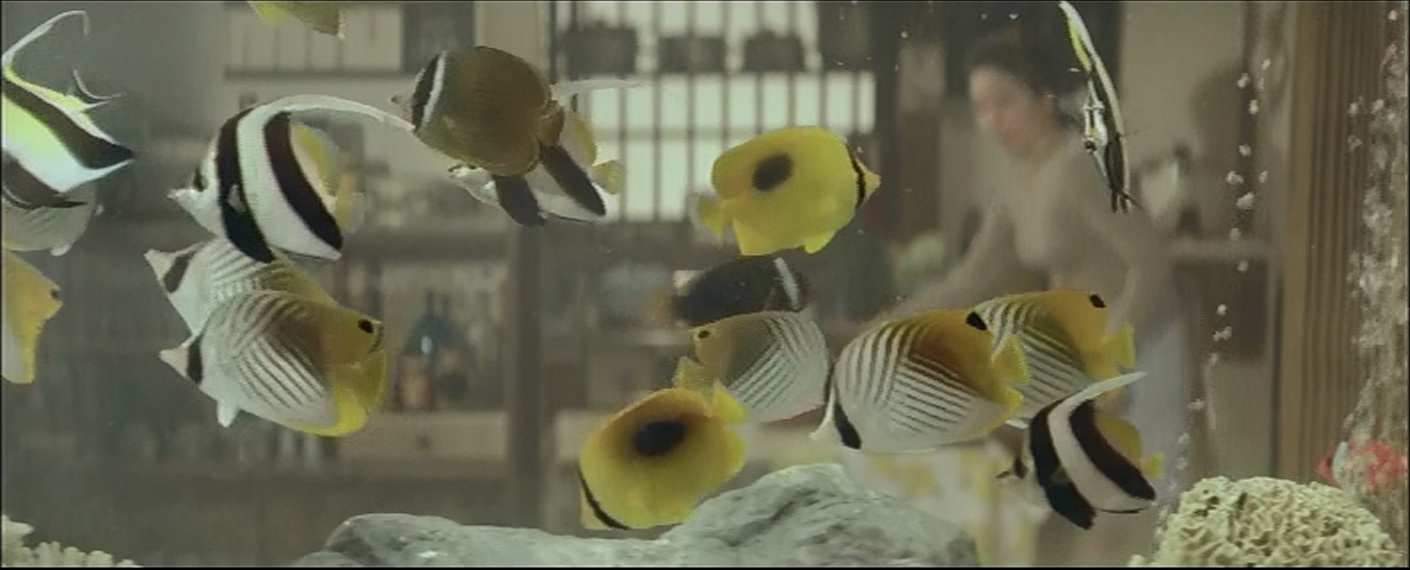
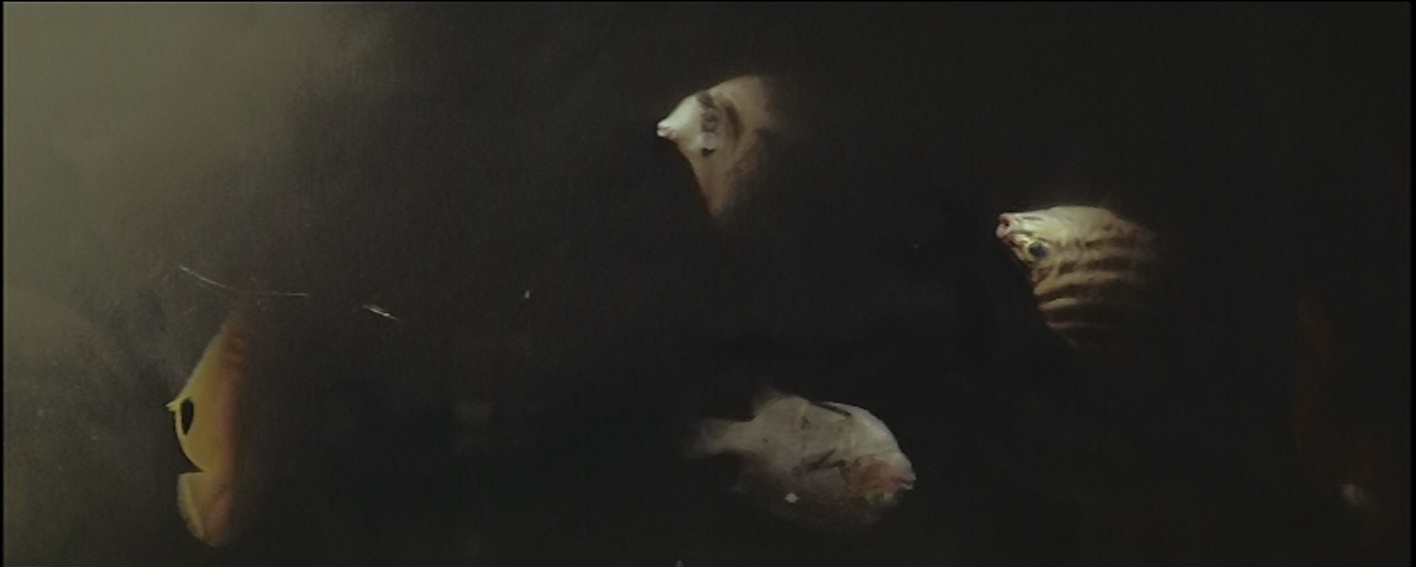
Scientist-Dad is brought a strange monstrous tadpole, which is how the family gets directly involved in the monster action. While looking for the monster Toru is coated with acidic slime on the left side of his head. Hedorah is not like other monsters. His very presence is toxic. This is one of the tropes picked up by Pacific Rim.
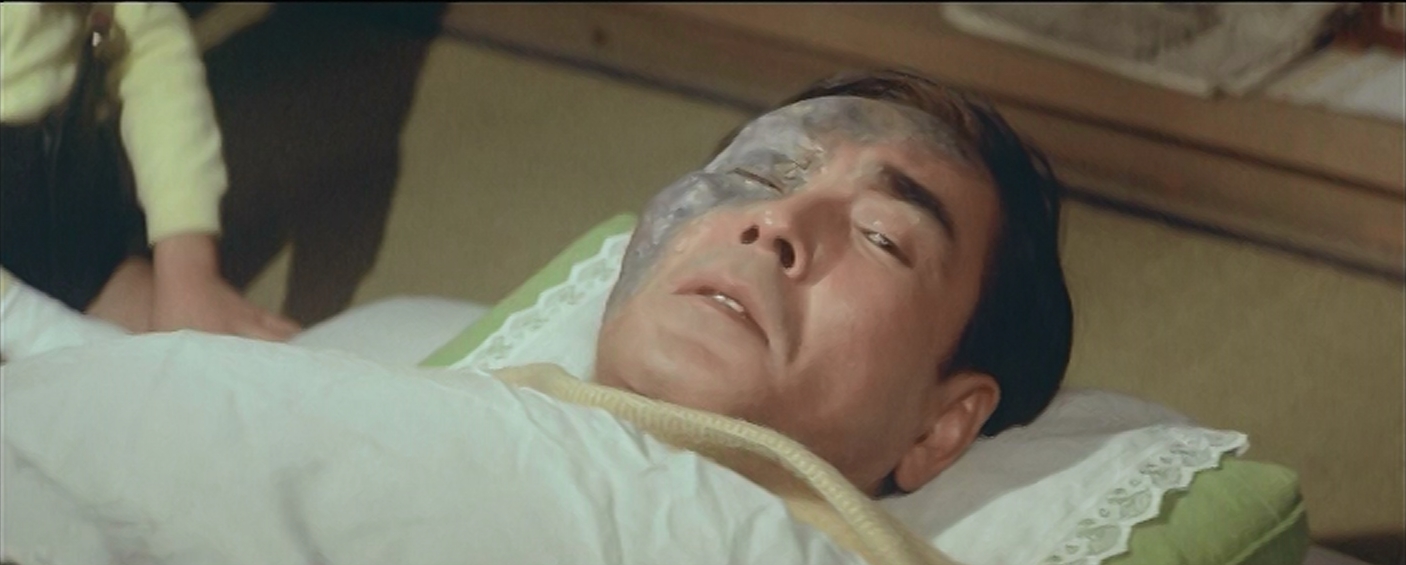
Hedorah is like many other kaiju, coming from the sea, but his provenance deserves a bit of discussion. Where Godzilla comes from the sea like a hurricane, Hedorah does so because the sea is polluted. Strange chemicals have combined to make him, and when Godzilla punches him, he gets burned. So the usual wrestling and boxing aren't going to be options in this fight. Further, he is the first example of the monster that changes form. First he is a giant tadbpole, then a walking, drippy humanoid, and finally a flying whatever.
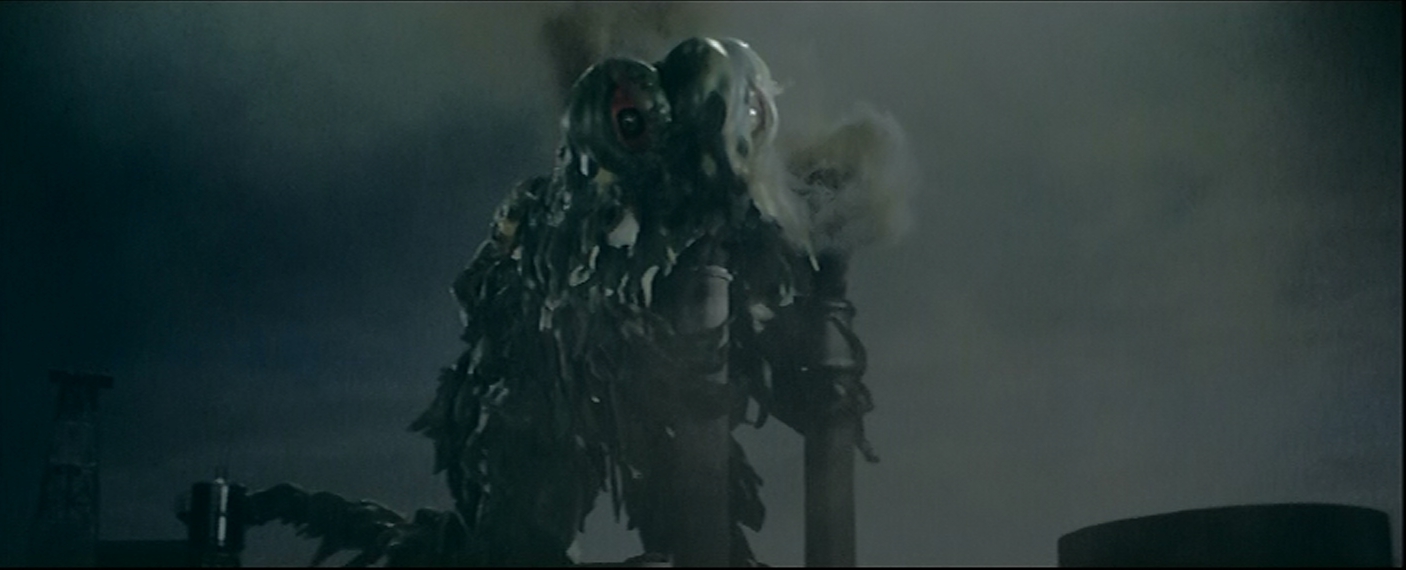
Unlike many monsters, Hedora's sound design is excellent. It has a large number of moods, expressed through sound. It's got a weird humming purr when it's happy, such as when it's taking a hit from a factory smokestack. There's also the strange trill it uses for a roar. It even laughs.
Godzilla vs Hedorah is the first Godzilla film with a body count. The newscasters, a staple of the franchise, talk abot the number of people dead and wounded in the wake of the first monster fight. And in a surprisingly graphic death scene after Hedorah flies over a group of people. They begin to melt away, reduced to skeletons by the time Ken arrives.
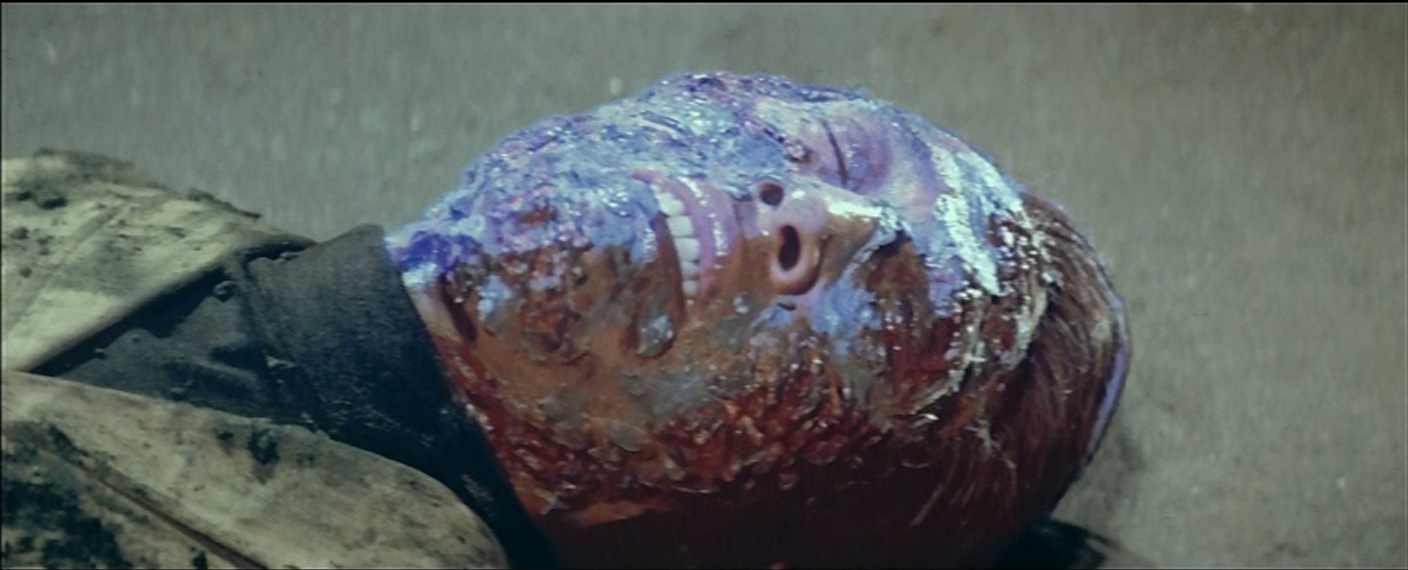
Every action by the humans stews in the camera's dissaproval. Hedorah is the first monster that mankind has not merely pissed of, but actually created. Godzilla must fight Hedorah because humanity can't remove its head from its collective ass long enough to get anything done. News reports are inaccurate to the point of fatality. Dozens of television screens contain screaming faces, turning their speech into a jumble of voices that eventually becomes a meaningless jumble of colors. A million-person jam for the environment attracts only a few hundred people, who dance and do nothing else. The dancers throw torches at Hedorah, only to be cut down by its acid mudballs. The military, useless for anything but show in the Godzilla franchise, can't even get electricity to it's killing weapon, requiring Godzilla to use his atomic breath to power is. This is a deeply misanthropic film. No human comes out unscathed or looking competent. However, this feeds in to Godzilla's continued development as a hero, since he is the only thing that can stand against Hedorah. In fact, Godzilla is first shown against the rising sun, the symbol of Japan.
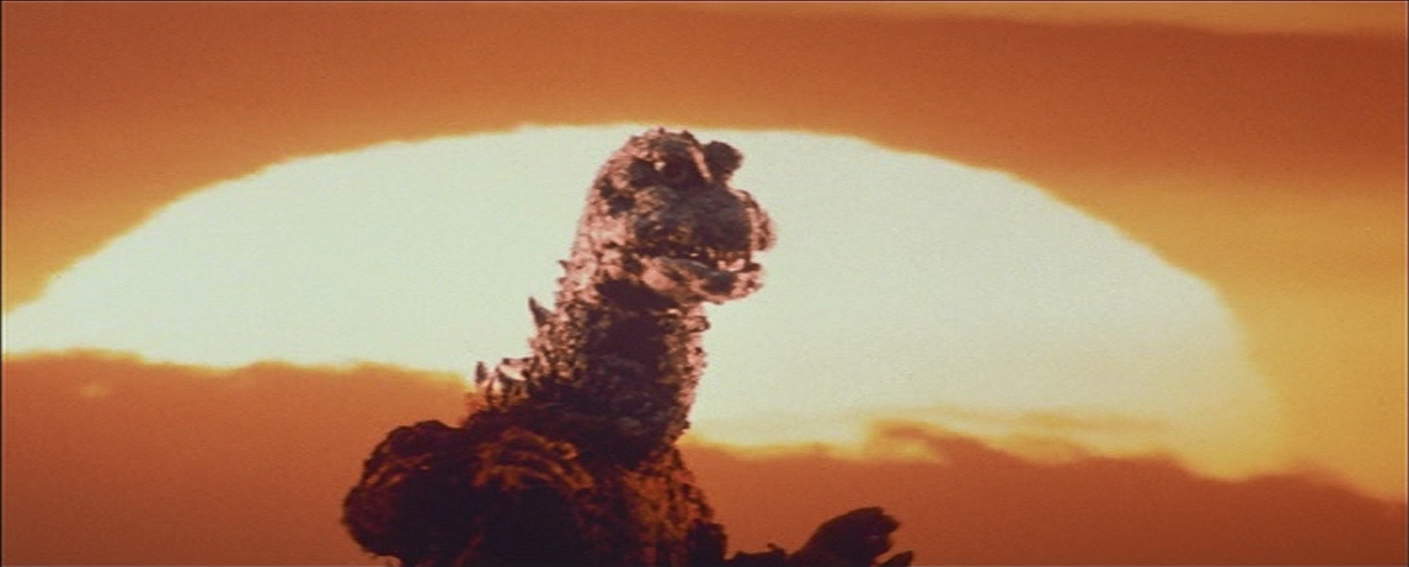
The film is notable for being the first in which Kenpachiro Satsuma wears a monster suit. Satsuma would become the Godzilla suit actor for the Heisei series, from 1985 to 1996. Few Godzilla films have made the suit seem small by comparison, but Hedorah's massive and bulky suit does exactly that. Eye-damage is a recurring theme. Dr. Yano's eye is patched over with his bandage, Godzilla takes a acid sludge-ball to the eye, and he returns the favor by putting out one of Hedorah's great red eyes.
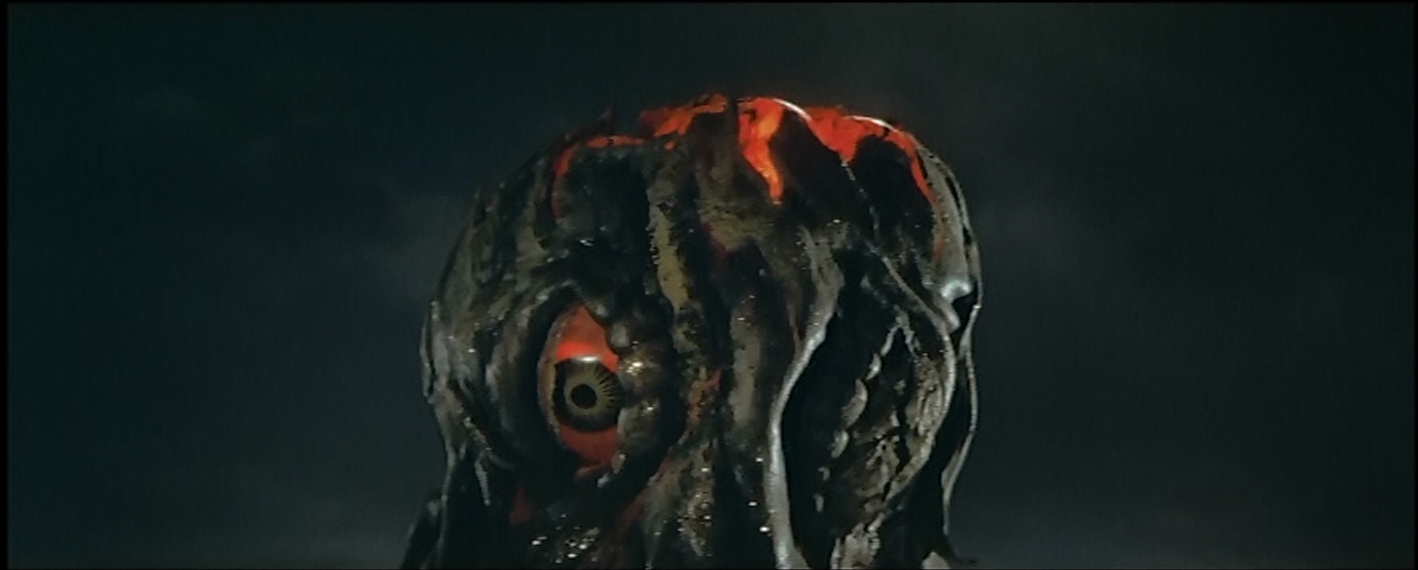
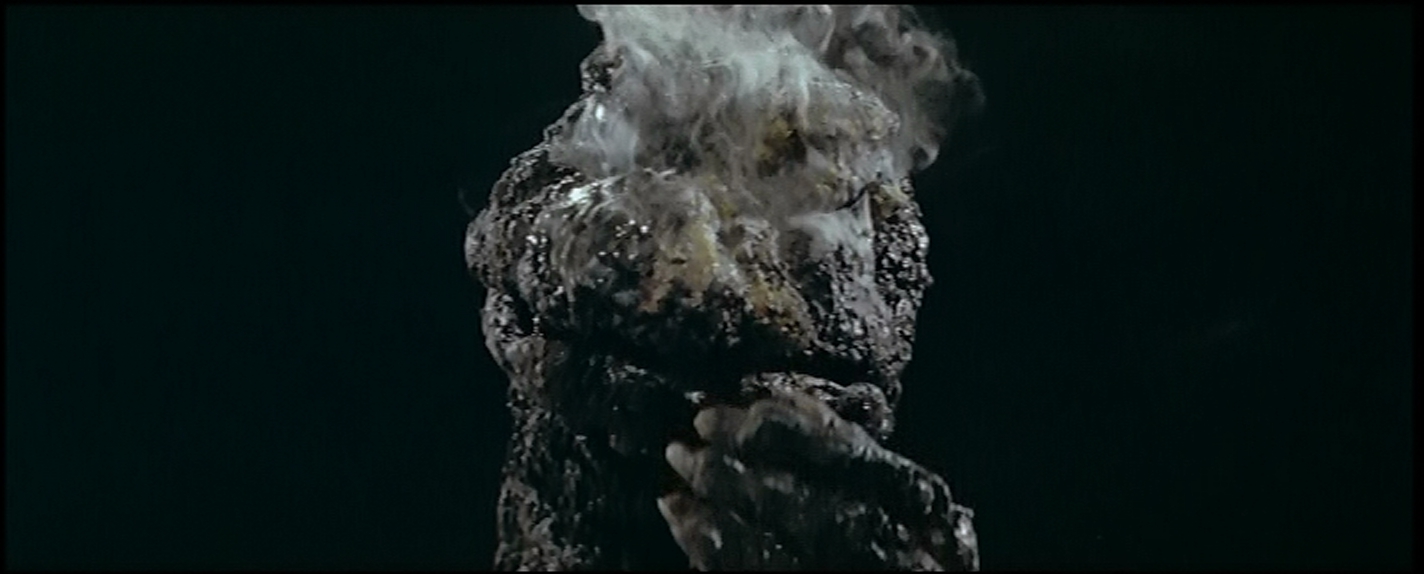
The climax is unusual, in that Hedorah's defeat comes from Godzilla's atomic ray and the giant man-made electrodes. Hedorah is dehydrated into quiesence, after which Godzilla pulls a pair of orbs from the creature. Organs? Eggs? We'll never know. But those get reduced to dirt, as well. Godzilla doesn't seem affected by the power of the dehydrator.
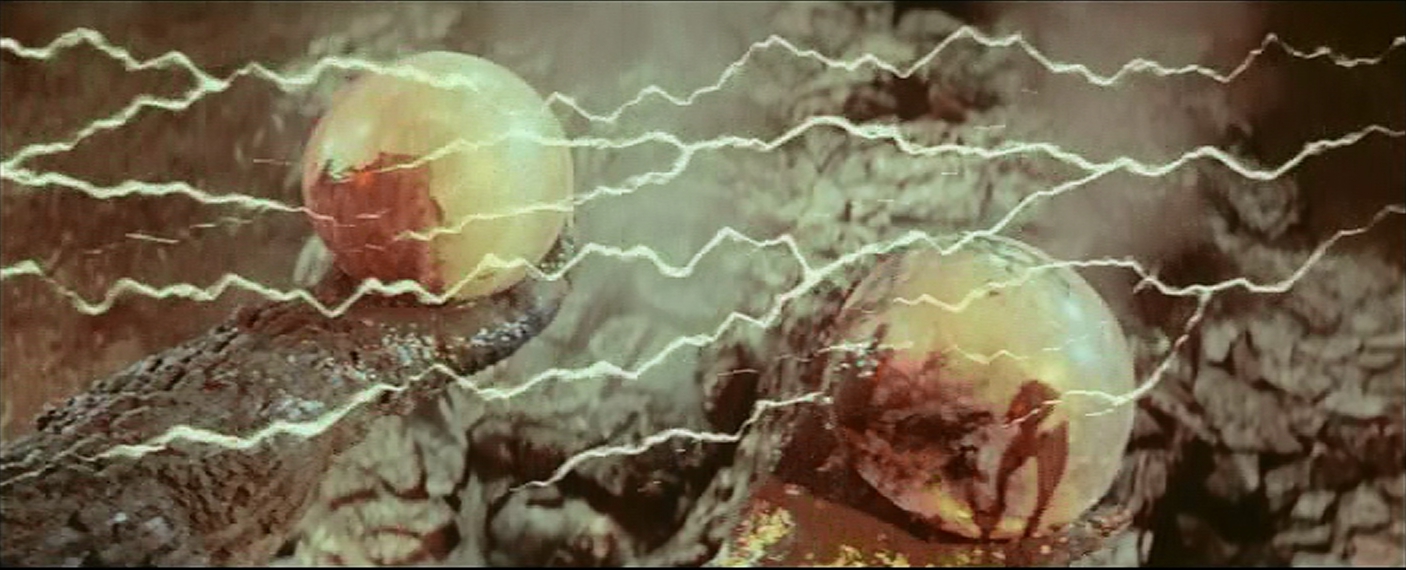
Hedorah isn't quite done yet. It tramsforms into its flying form and attempts to escape. And in what is one of the most infamous moments in Godzilla history, Godzilla uses his atomic breath as a jet, and flies, following him. If anything is a camp moment in this film, it's this moment.
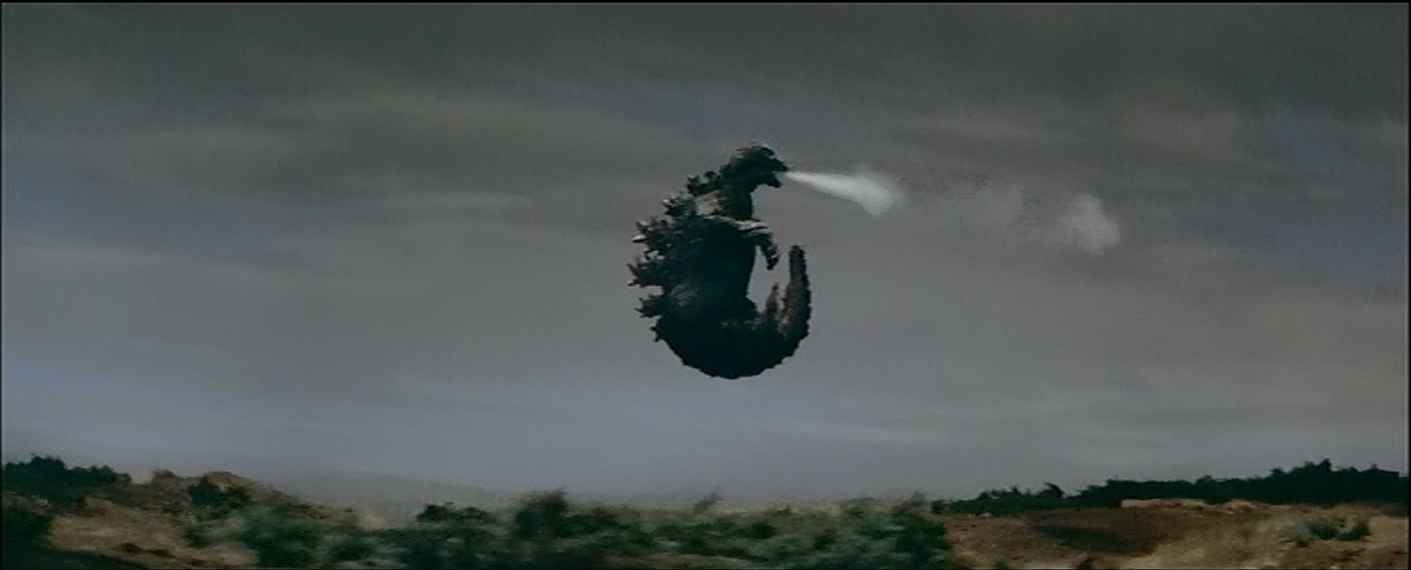
Godzilla then dries Hedorah until it's textured like an arid stream bed, and pulls the creature apart. There's some perfunctory stuff showing us Ken isn't dead, and then we're done.
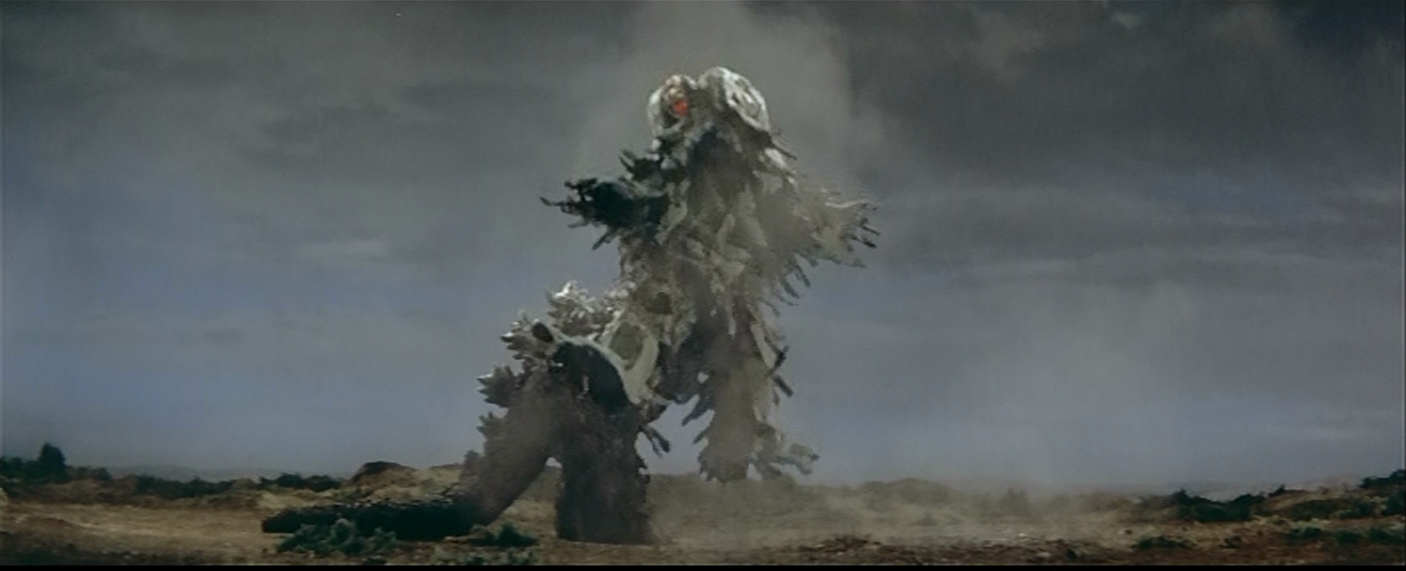
Whatever other criticism can be levelled at the film, and many can be, Banno created the film without reusing footage from other films. It's all original, and there's a large amount of monster action.
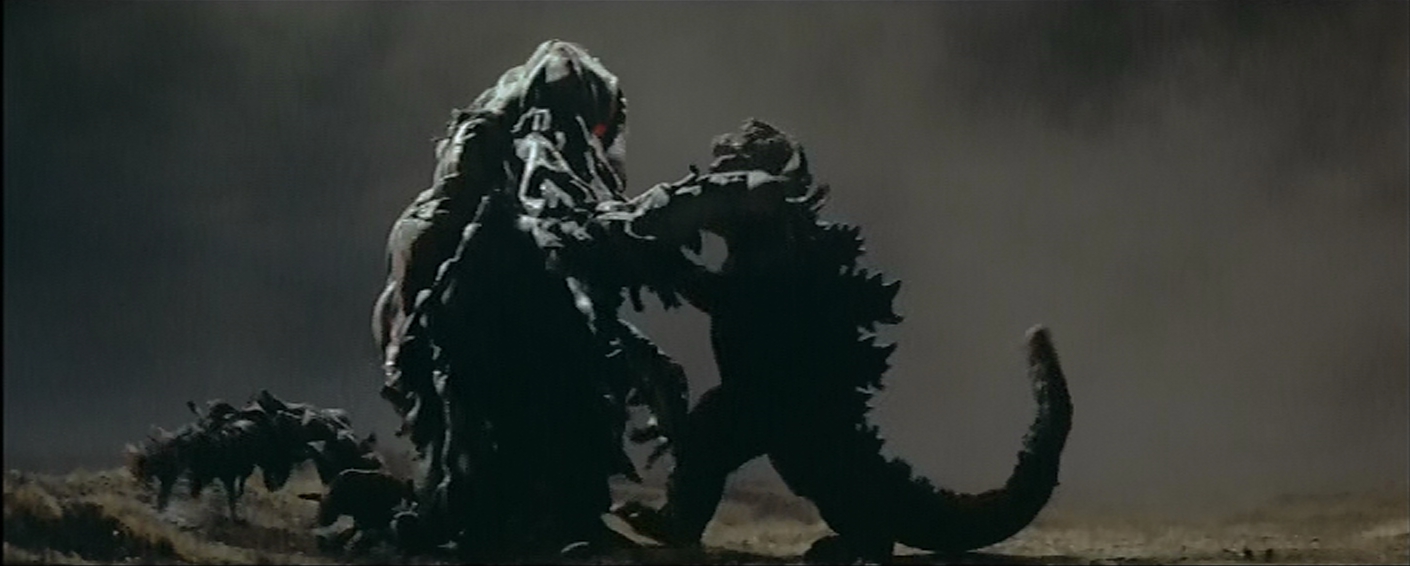
This was the last time Yoshimitsu Banno would work for Toho. Godzilla producer Tomoyuki Tanaka was in the hospital for the entire shoot, and lost his shit at seeing the completed film. Banno was banned from Godzilla, and film-making generally. His one further contribution was writer and assistant director for the 1974 The Prophecies of Nostrodamus. After that, his next involvement with Toho would be producing Godzilla 2014. It should be noted that Godzilla vs Hedorah sold a quarter of a million more tickets than Honda's All Monsters Attack. So the film wasn't a flop.
The film does not convey as easily as it wants to. It is certainly memorable, but the metaphors are strange and often convoluted. Many people are puzzled by the fish heads that appear on the dancers, for example. Drawing the line between that and the death of the fish in the bay is not easy, unless you've done a bit of research. Once I understood it better, I enjoyed the film more. But having to do work in order to understand a film is not something most people enjoy.
One of the many positive effects of the 2014 Godzilla resurgence is that Kraken Media have decided to release Godzilla vs Gigan, Godzilla vs Hedorah, and Ebirah, Horror of the Deep on DVD and Blu-Ray. I can't wait to pick mine up.
2 comments:
To my opinion, this is the most ambitious movie of the franchise. They tried for "art". I think, if I lived in Japan in the early 70s, I might of gotten it, even being a teenager. However, being an American (and having a decade seperate me from the movie when I saw it), it seemed just too strange.
That was the disconnect for me.
That and Godzilla flying.
As I seen it again, I now understand a bit more of what they were attempting in the film. It was ambitious. It ...mostly... works.
I think you are spot on in your presentation of the movie.
One of my favorite monsters (the opposition), but one of my middle favorite movies in the franchise.
Looking at this review, which was quite good and informative on the fish heads, I have to correct a major misconception; Banno was never banned from making Godzilla or Toho films, and Tanaka never outright hated the film.
While Tanaka wasn't happy with Godzilla being geared more towards children and becoming more heroic, and didn't like the psychedelic atmosphere to it, he was never that harsh with his words to Banno. He also loved the Godzilla flying scene, as Banno got the OK for it from Tanaka's agent while he was in the hospital.
Post a Comment